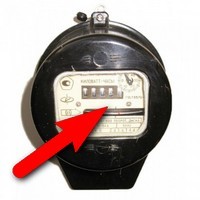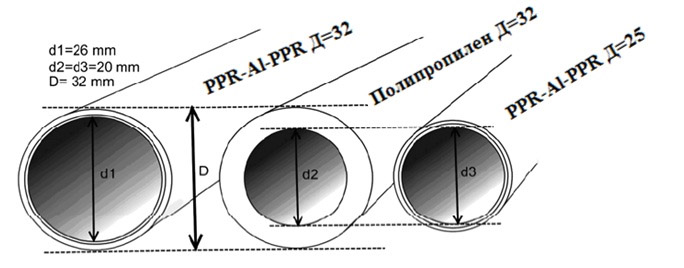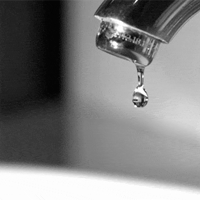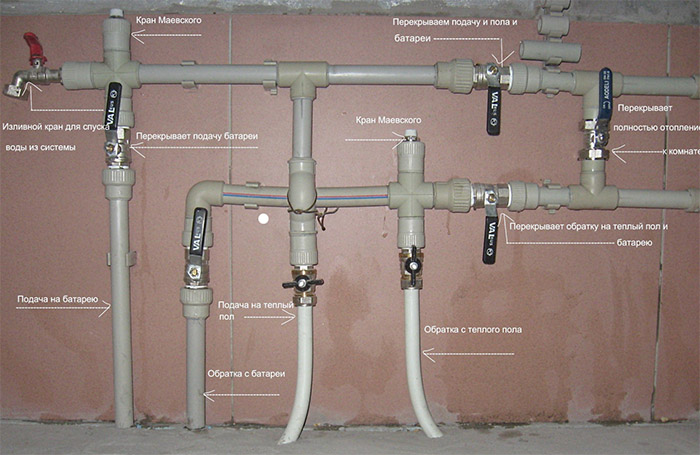Which polypropylene pipes are best for a home heating system?
The pipeline is one of the important components of heating a private house. The quality and characteristics of the material from which it is made depend on the reliability and duration of the life of the entire system. Previously used steel pipes were difficult to install and subject to corrosion. More digestible metal-plastic ones have a fairly large number of joints during assembly, which affects the tightness of such a connection.
Polypropylene pipes, in turn, are a modern material that does not have the shortcomings of its prototypes. Sealed, environmentally friendly, does not require additional costs for the operation of the system. It occupies a leading position in sales in the construction market, due to its affordable price, as well as the maximum number of positive consumer reviews.
Varieties
A fairly extensive scope allows the use of polypropylene in hot and cold water supply, underfloor heating, for transporting compressed air and even aggressive chemical environments. However, the use of polypropylene pipes is better for heating due to a number of their properties. The features in the operation of polypropylene pipes in heating systems include a significant difference in pressure compared to water supply, strong heating, as well as seasonal temperature fluctuations up to threshold values. The main component of communications is the latest formula of polypropylene - a durable, safe and reliable material that provides all the most important qualities.

Technical characteristics of polypropylene are as follows:
- density from 0.9 g/cm3;
- thermal conductivity at 20 °С - 0.24 W/m°С;
- corrosion resistance;
- temperature range of application – from 10 to 120 °С;
- inertness to chemical compounds of alkaline and acid character;
- frost resistance - from -5 to 15 ° С;
- thermal expansion coefficient - 0.15 mm / m * C;
- melting point - 160-170 ° C;
- service life up to 50 years.
According to their properties, polypropylene pipes are produced in the following types:
1. homogeneous - made of monolithic polypropylene - are used, as a rule, only in water supply systems;
2. reinforced polypropylene pipes - have a wider range of applications. Designed for both water supply and for use in underfloor heating and radiator heating systems. This fact is explained by the fact that when heated, the material tends to expand, which for communications is fraught with sagging and leakage. Depending on the processing method, the following types are distinguished:
- reinforced with a solid aluminum sheet - from the outside or from the inside, often in the middle of the polypropylene layer, there is a reinforcing link;
- reinforced with perforated aluminum sheet - carried out only on the outside of the product;
- reinforced with fiberglass in the middle part;
- reinforced with a composite material consisting of a mixture of fiberglass and polypropylene.
Diameter selection
When choosing polypropylene pipes, it is necessary to pay attention to the diameter of their cross section. To date, highways are produced in sizes from 10 to 1200 mm. The parameter is selected individually for each case, based on the hydrodynamic calculation and the functional purpose of the heating system. In this case, most often the goal is to choose the minimum allowable size.
Details may vary depending on the scale of the structure. If it is an industrial or public building, larger options from 200 mm and above are installed. In a private house, a diameter of 20-35 mm is preferable due to sufficient throughput. For central heating, a minimum dimension of 25 mm applies. For autonomous heating, this value may vary somewhat. When installing the underfloor heating system, the maximum allowable diameter is 16 mm.

Selection criteria
The main criteria for selecting heating elements are as follows: operating temperature, pressure, reinforcement method, diameter. With the latter, everything is more or less clear. Now a little more about the temperature regime of use and nominal pressure.
Pipes for heating, preferably reinforced, must withstand a pressure of at least 2.5 MPa. The most popular are the categories PN 20 and PN 25. The operating temperature is also, as a rule, indicated in the marking of communications and should be 90-95 ° C.
You can choose the quality pipes required for a particular heating system based on the description of the material class:
Pipes for heating systems are selected taking into account the climatic conditions in the region. It is not advisable to choose polypropylene as the main heating element at an average daily winter temperature below -25 °C. At extremely low outdoor temperatures, especially in combination with increased pressure in the pipeline network, there is a risk of overheating of communications and, as a result, rupture. Rare, but nevertheless possible force majeure.

As for a private house, where the temperature of an electric or gas coolant is set manually, buying polypropylene will be the best solution. As already known, only reinforced polypropylene is used for heating due to the lower coefficient of thermal expansion. The cost varies slightly depending on the method of amplification.
However, for self-installation, it is worth choosing more convenient fiberglass models. When installing them, the use of a shaver - a cleaning tool is not required. The same option is considered more reliable compared to its counterparts, since it does not have an adhesive layer, the fiber is practically fused into polypropylene, as a result of which the possibility of communication delamination is prevented.
Installation nuances
1. For heating systems of a private house, it is recommended to use only reinforced communications. Reinforcement with fiberglass or aluminum in various combinations is equally suitable. The fiber included in the composition somewhat simplifies the connection process - no preliminary stripping is required.
2. A prerequisite for space heating is to prevent installation between walls or ceilings. The minimum clearance for thermal expansion must always be taken into account. The same condition is observed when installing in the floor or inside the wall.

3. If there is a large section of length, the use of so-called compensators is required - turns of the pipeline or U-shaped brackets, which, when expanded, does not allow the pipe to bend. It is important to remember that installing such an element in any part of the system can be dangerous - it is fraught with a cessation of water circulation and breakdown.
4. In total, the entire installation process of polypropylene pipes is available for self-conduct. In a private house, it is necessary not only to choose the right diameter, but also to correctly treat working with tools and parts.
5. Installation is carried out at an ambient temperature of at least 5 °C. First, you should take care of cleaning the surfaces from contamination, the absence of open flames near products made of polypropylene.
6. For cutting use special scissors. In the case of a jigsaw or a hacksaw, careful processing of the edges from burrs and polypropylene chips is necessary.
7. Polyfusion welding of polypropylene with an electric welding machine is used to ensure a reliable connection. In order for the seam to be of high quality and homogeneous, the burner should be heated to 2700 ° C before starting work.
Manufacturers and prices
Numerous reviews of professionals make it possible to identify the most popular manufacturers of polypropylene fittings and pipes, which are both foreign and domestic representatives. According to consumer reviews, the leading position is occupied by German Banninger, Akwatherm, Wefatherm, Rehau. The Czech factories Ecoplastic, FV-Plast have also proven themselves well. Turkish samples, although lower in cost, however, still have the right to exist such brands as TEBO, Pilsa, Vesbo, Firat, Kalde and Jakko. Chinese goods delight the consumer under the Blue Ocean and Dizayn brands. And from domestic ones, PRO AQUA, RVC, Heisskraft, Santrade, Politek can be noted.
Based on a review of manufacturers, below are approximate retail prices for polypropylene communications, which can be bought at any professional hardware store.
| Name | Characteristics, mm | Price, rubles per m |
| PRO AQUA glass fiber reinforced RUBIS SDR 7.4 | 25 | 80 |
| PRO AQUA, aluminum reinforced in the middle DUO SDR 6 | PN20; 32 | 190 |
| Kalde, reinforced (polypropylene + fiberglass) | PN25; 25 | 80 |
| Firat, reinforced pipe (aluminum) | 20 | 103 |
| Polypropylene pipe Baenninger, reinforced with fiberglass | 25 | 170 |
| Polypropylene pipe FV-Plast Stabi, reinforced with aluminum | PN 20; twenty | 94 |
| Pipe PP Valtec | PN 20, 20 | 120 |
| Blue Ocean pipes made of heat-resistant polyethylene with increased strength for underfloor heating | PN. 1.0 MPa; 16 | 82 |
